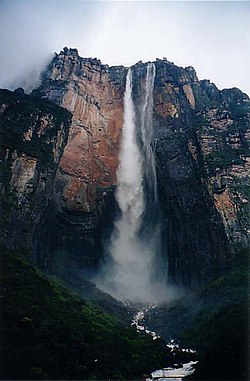Mérida
Mérida state is a major tourist centre in Venezuela. It has an extensive network of hotels not only in the capital city but also throughout the state. Starting from the city of Mérida, it has the longest and highest cable car in the world, reaching the Espejo Peak of 4,765 m (15,633 ft). In the Méridan páramos, there are good hotels and restaurants. Another place to visit is Mucuchíes, the village of Los Aleros. There is also the National Observatory of Llano del Hato. The city has several museums worth visiting: Beekeeping Museum, Colonial Art Museum, Modern Art Museum, and the Museum of the great Méridan Don Mariano Picón Salas and the Aquarium Garden. Also in the state are hot springs such as Bailadores Las Tapias and la Capellanía Park.
Caracas
Caracas is the capital of Venezuela and a world-class cosmopolitan city. In the west of the city, the Libertador municipality, tourism is important in regard to the historic centre of the city, the Caracas Cable Car (Ávila mountain Cable Car), the University City of Caracas, Zoos, Sabana Grande Boulevard, among others.
In the east of the city, especially in the Chacao and Baruta municipalities environment of progress and modernism is indisputable, European-style shopping malls, beautiful squares, night clubs, etc. Also the Generalísimo Francisco de Miranda Park, located in the Sucre municipality is heavily of exploitation for tourism.
In the southeast end of city is located a small town, El Hatillo, which has an impeccable colonial town, an atmosphere of peace and tranquility.
To further exploitation of tourism as a factor of endogenous development, the national government has created socio-cultural plans of international concern as the Feria Internacional de Turismo de Caracas (FITCAR), which has been carried held annually since 2005 and promotes tourism in the country, showing to the world the cultural, tourist, traditional, musical and culinary wonders of Venezuela.
Venezuela has some of the most dangerous cities in the world, [4] for example in 2018, there were 2,980 murders in Caracas (99.98 per 100,000 inhabitants), [5] 645 murders in Ciudad Guayana (78.30 per 100,000 inhabitants), [5] and 264 murders in Ciudad Bolívar (69.09 per 100,000 inhabitants). [5] In Venezuela, under two per cent of reported crimes are prosecuted. [6]
Canaima
Canaima National Park is spread over 30,000 square kilometres (12,000 sq mi) to the border with neighbouring Guyana and Brazil, for its size is considered the world's sixth largest national park. About 65% of the park is occupied by rock plateaus called tepuis. These are a unique biological environment, also presenting a great geological interest. Its steep cliffs and waterfalls (including Angel Falls, which is the highest waterfall of the world, 1,002 m (3,287 ft)) are spectacular sceneries.













